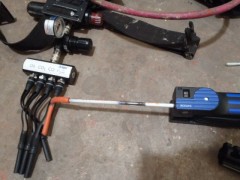Compressed Air Quality Testing
What is Air Quality Testing
Breathing air quality testing to AS 1715:2009 Appendix A for workers using compressed air line or cylinder respirators provides reassurance that the air they are breathing is adequately safe in their harsh working environments.
AS1715:2009 Selection, use and maintenance of respiratory protective equipment, sets out requirements and guidelines for respiratory protection. The Australian Standard includes discussion of respiratory hazards, the assessment of associated risks and various methods of control including the use of respiratory protective equipment (RPE).
How is Air Quality Testing Conducted for Compressed Air
As part of the assessment, inline breathing respiratory protection requires an assessment on the compressed breathing air quality, including testing the following:
- Air Temperature Testing
- Air Humidity Testing
- Oxygen (O2) Testing
- Water Vapour (H2O) Testing
- Carbon Monoxide (CO) Testing
- Carbon Dioxide (CO2) Testing
- Oil Mist Testing
- Odour Air Quality Test
The compressor line or cylinder should be filled initially to at least 12 MPa and subsequently tested to ensure the air quality of the breathing air. The capacity of the breathing air should be 180 litres per minute (L/min) for each person. Compressor lines with a ring circuit are recommended to reduce the potential of flow reduction due to multiple lines feeding off the same compressor.
What Instrumentation is Used for Compressed Air Quality Testing
Breathing air quality testing is conducted by specific colorimetric apparatus and direct reading instruments which are connected to the compressor lines or cylinder, downstream of the filters. This ensures the breathing air quality of workers using full face positive pressure respiratory equipment.
Why Use Safe Environments for Air Quality Testing
We are Occupational Hygienists, not mechanics… We can provide atmospheric air monitoring assessments, gas detection and personal fit checking to ensure that the respiratory program is effective. Not only do we understand the types of contaminants you need to control; we can assist is reducing exposures to eliminate the need for in line compressed respirators.
Results of compressed air quality testing are provided instantly with a full report provided within a couple of days to document the findings. The reports should be collated within an Occupational Health and Safety Management System.
How Often Should Air Quality Testing be Conducted
Safe Environments recommend a program of regular breathing air quality testing on a quarterly basis to ensure that workers breathing compressed air are not placed at undue risk. Breathing air quality testing should be conducted and reported to AS 1715-2009 Appendix A – Air Quality Requirements.


